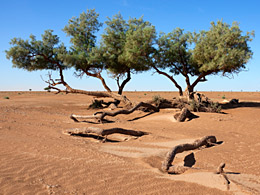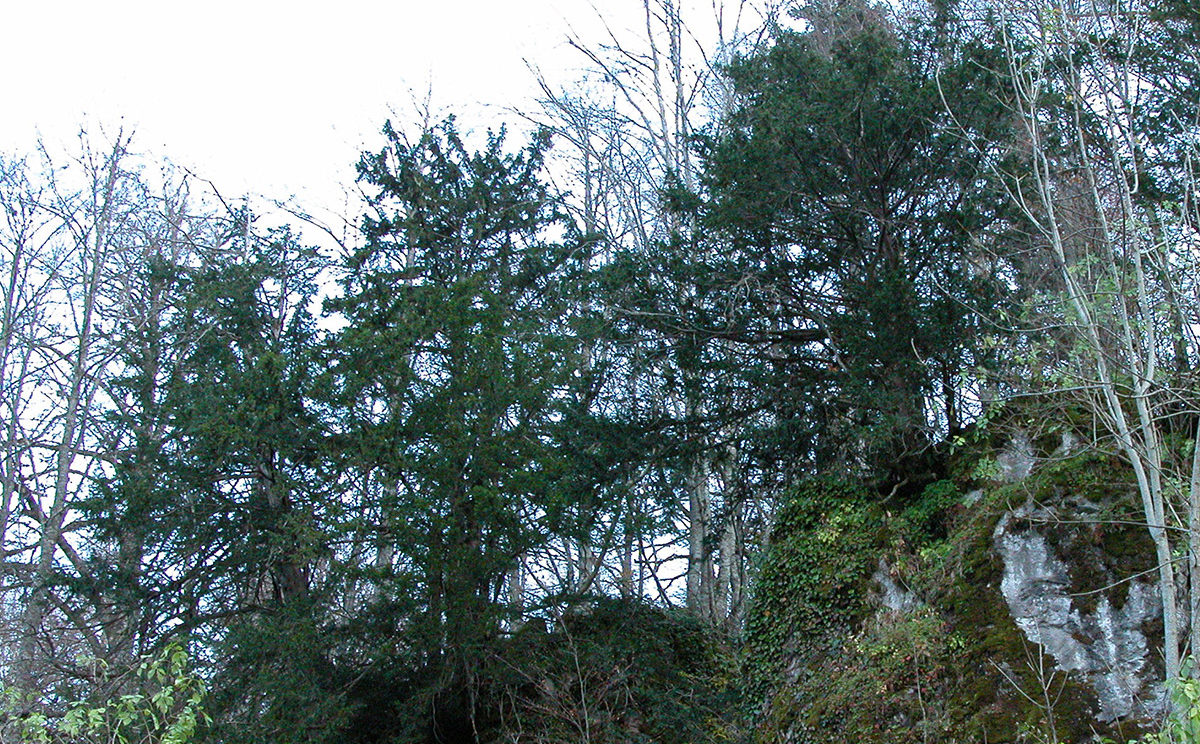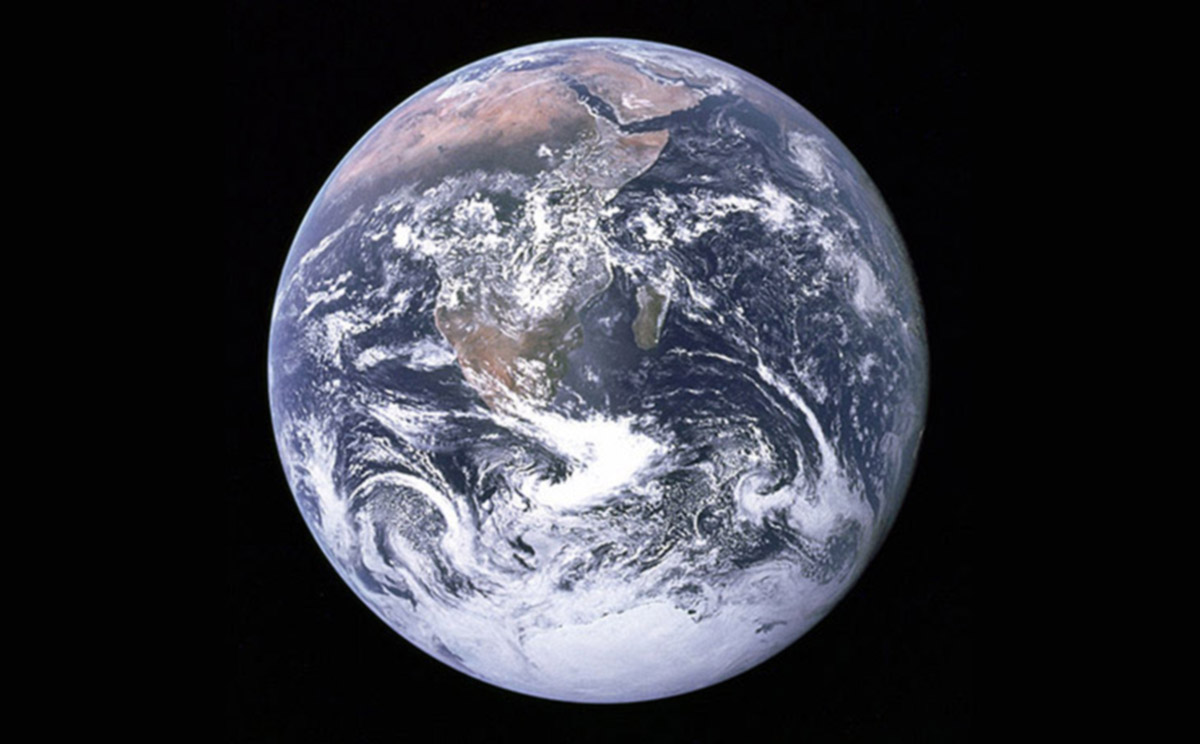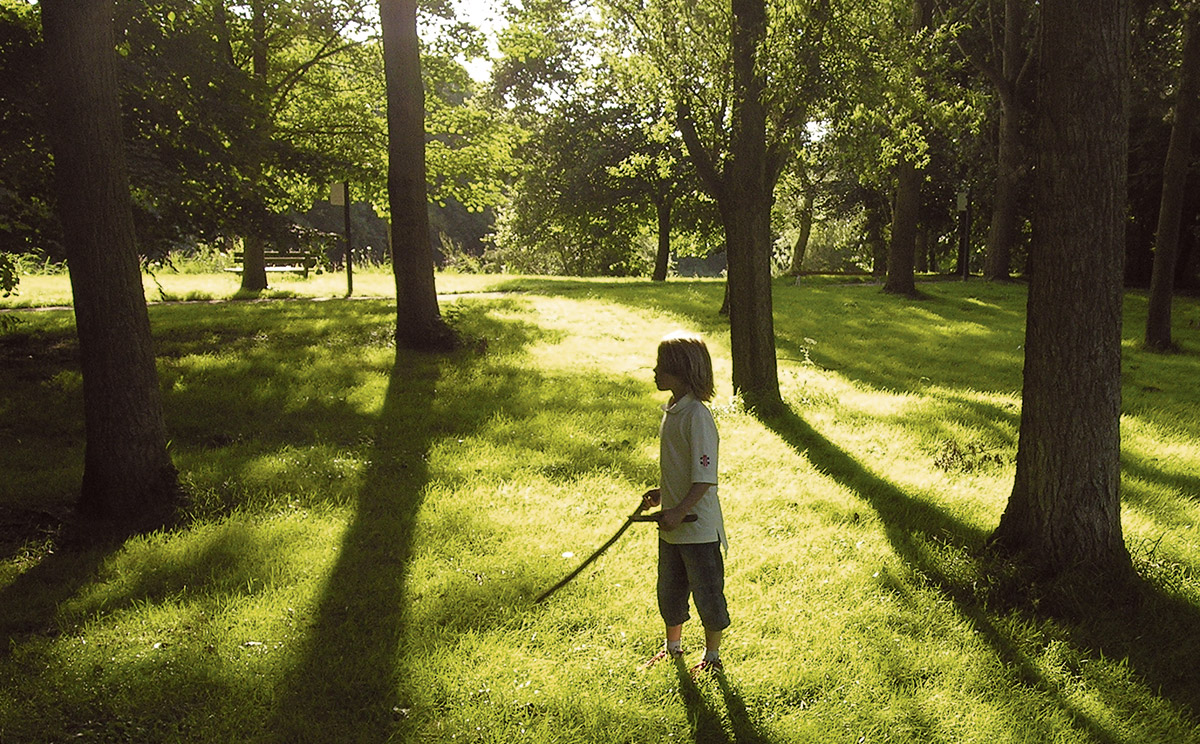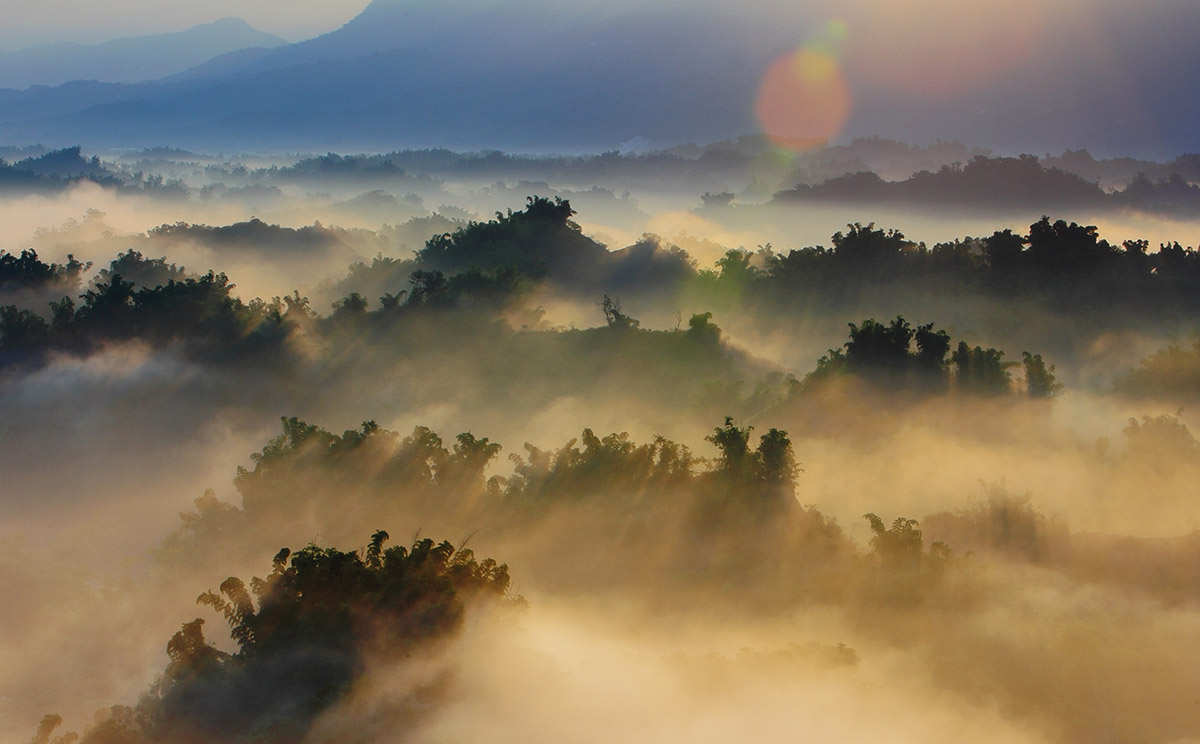Great Green Wall of China is growing
Jan 2010
The Great Green Wall of China is the biggest afforestation project in the history of humankind. The ‘Wall’ is going to be a woodland belt about 2,800 miles (4,500 km) long which is hoped to halt the desertification of whole regions of China. 28 per cent of the land surface of China is threatened by desertification, which jeopardizes the livelihood of 100 million people. Gigantic dust storms sweep over vast areas bordering the Gobi Desert (located in the north of the country. Extending desert heat has already risen average temperatures in Peking by a few degrees Celsius. Japan, North Korea and South Korea too suffer from sand storms coming over from China.
The reasons for desertification are, like in the other continents, anthropogenic, i.e. human-made:
• increased land use overburdens the soil, depleting it of nutrients and breaking down its structure;
• overgrazing and deforestation decrease plant cover, the ground loses its firmness and becomes subject to erosion by wind and rain;
• since the foundation of the People’s Republic in 1949, industrialization has shown an ever-increasing hunger for fuel which has been satisfied by tree felling (until 1978, forest cover in China had fallen from eight to five per cent!);
• growing water consumption of the industry, agriculture and increasing population contributes further to the desertification of vast areas.
Forests are generally perceived as the best countermeasure against desertification of entire regions.
The work on the Green Wall of China began in 1978. So far, protective forests have been planted in thirteen provinces of China, covering 22 million hectares (220,000 sq. km – the size of the main island of Britain; the size of Kansas or Idaho) altogether. This already prevents 200 million tons of desert sand from spreading onto non-desert land annually. But an actual inversion of the annual desert area increase could not be measured until the years from 2000 to 2004.
In 2009, China’s afforestation program had increased forest cover to 18 per cent of the republic’s land area.
In 2050, the Green Wall of China is scheduled to be completed, with a total area of 35 million hectares (350.000 sq. km).
Because monocultures can easily succumb to pests and diseases, the focus is on mixed woodlands. But pastures too are considered a part fo the Green Wall. The Chinese people are legally obligated to direct participation: every citizen between 11 and 60 years of age has to plant three to five trees annually (or pay a fine).
In 2003, China began to restructure its forest sector. Now, single farmers are allowed to lease woodlands and get their rights certified on paper. The leaseholders are now registered as the owners of the trees they planted. They are entitled to manage these youg woodlands, with certain restrictions. In this way the reform has created an incentive for farmers to invest in tree planting. [1]
The genus Tamarix deserves special mention in the fight against the desert. The tamarisk has been called the guard soldier of the desert because it is resistent against sand storms and even grows on salt or chalk soils. Already in the 1960s the botanist Prof Liu Mingting researched and cultivated tamarisks – and planted them on 100,000 hectares of saline desert and semi-desert in Kashgar Prefecture (Xinjiang). Since then, the ground has become fertile soil again, corn and cotton are grown widely, and the income per head has risen fourfold. [2] (compare tree news June 2009: Amazon deforestation fails to improve local life)
sources:
[1] Wikipedia about the Great Green Wall of China
[2] China.org: Ein Tamarisken-Forscher (German)
see also tree news: The Great Green Wall of Africa
